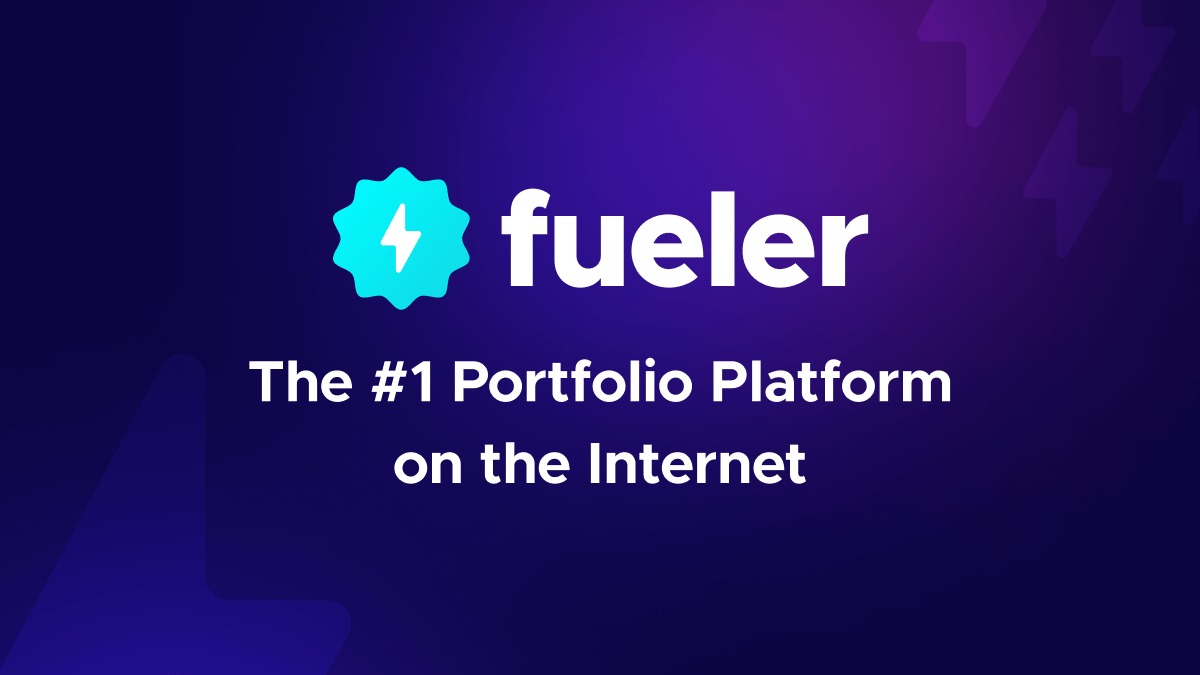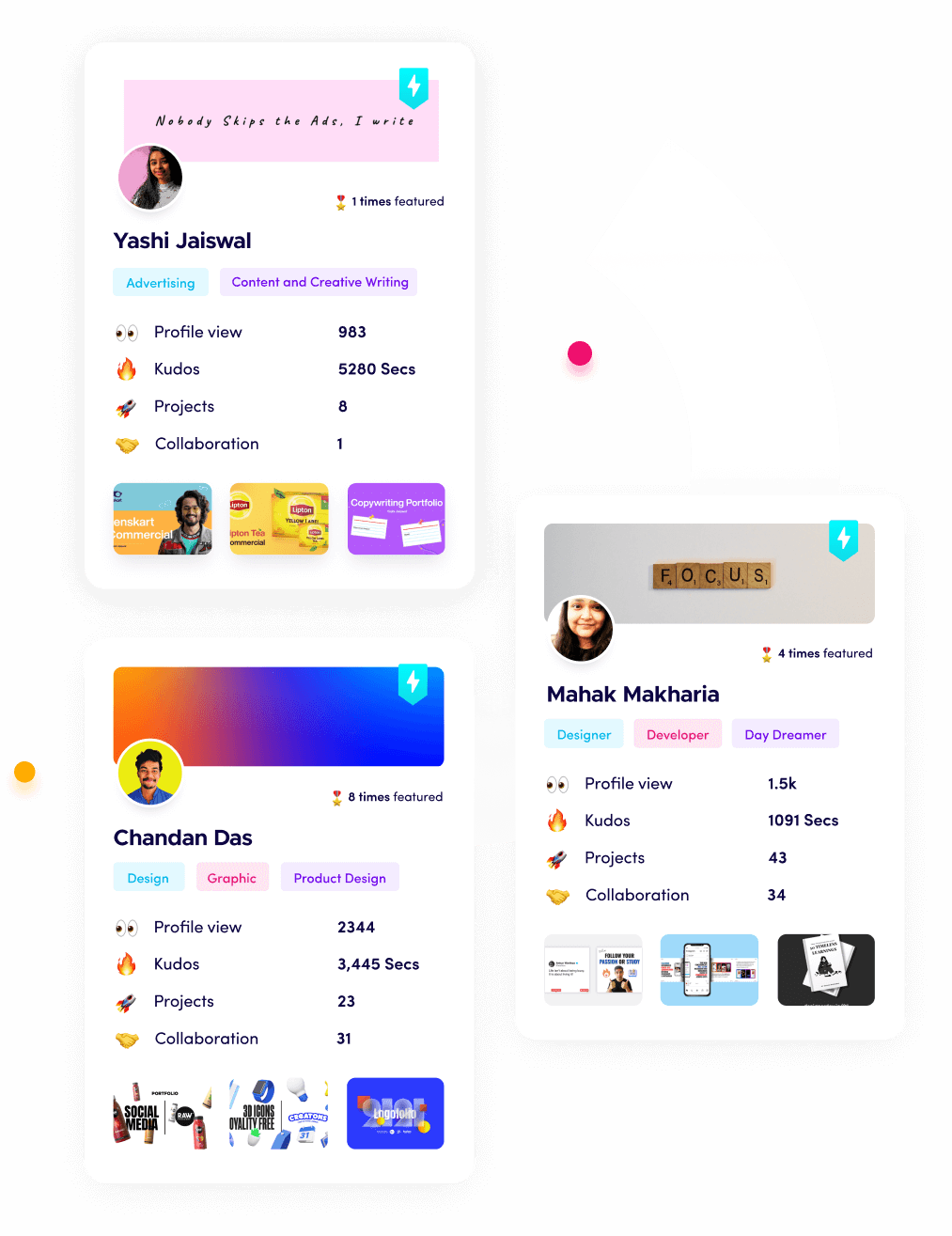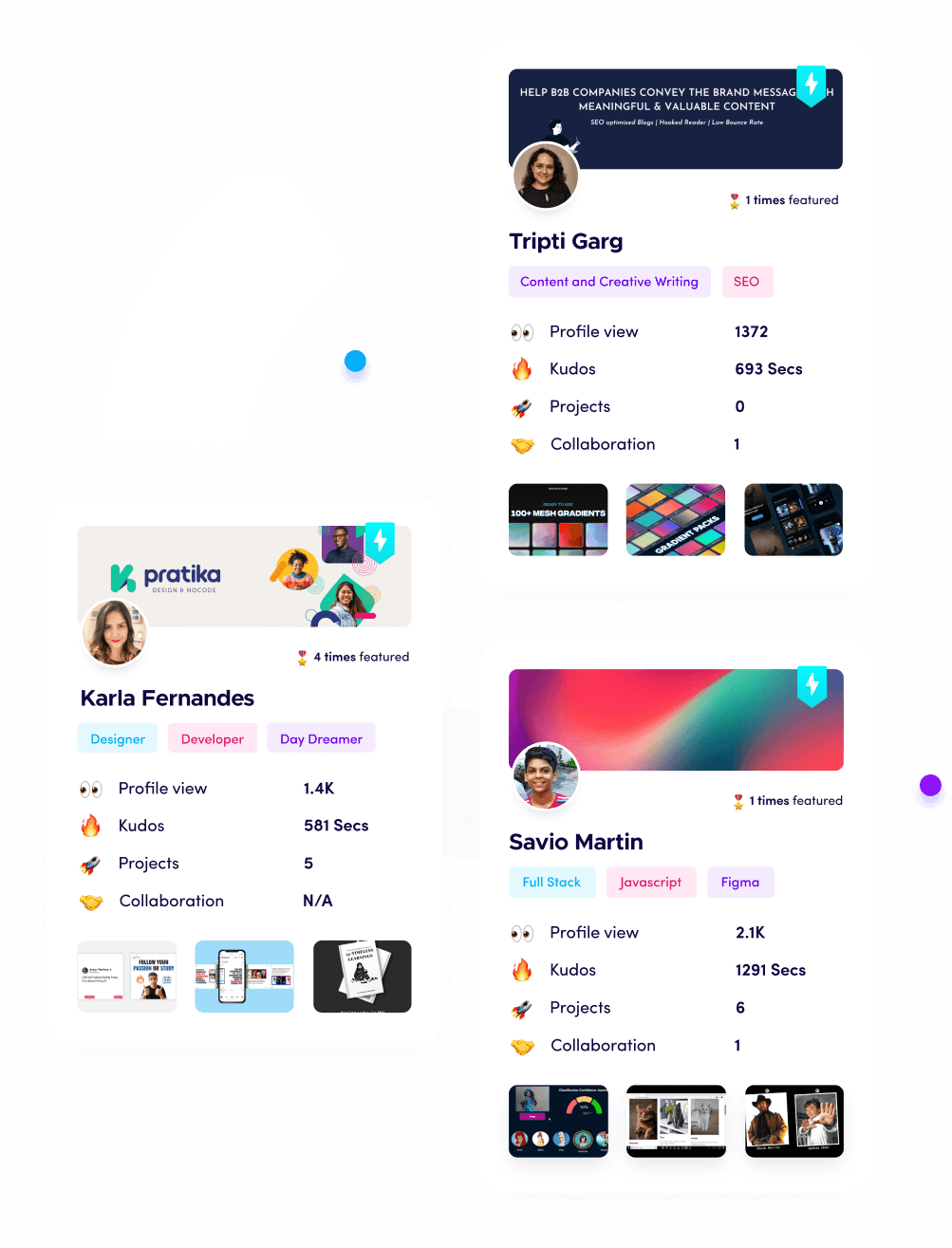Greenhouse ATS: What Job Seekers Need to Know in 2025

Riten Debnath
12 Jun, 2025

What if a single resume tweak could skyrocket your chances of landing your dream job? In 2025, mastering Greenhouse ATS could be that game-changer! Used by over 7,500 top companies like HubSpot, Airbnb, and Shopify, Greenhouse is one of the most powerful Applicant Tracking Systems shaping the hiring landscape. For job seekers, understanding how Greenhouse works is like having a secret key to unlock recruiter attention. In this detailed guide, I’ll break down everything you need to know about Greenhouse ATS—from how it processes applications to insider tips for standing out—all in simple, easy-to-understand language. Get ready to supercharge your job search and make 2025 your year!
I’m Riten, founder of Fueler—a platform that helps freelancers and professionals get hired through their work samples. In this article, I’ve walked you through everything job seekers need to know about Greenhouse ATS in 2025. But beyond mastering ATS, the key is showcasing your skills effectively. A strong portfolio isn’t just a collection of projects—it’s your proof of talent, your credibility, and your ticket to standing out in a competitive job market.
What Is Greenhouse ATS? A Deep Dive into the Platform
Greenhouse is a cloud-based Applicant Tracking System (ATS) designed to streamline the hiring process for companies of all sizes. It helps recruiters manage job applications by organizing resumes, tracking candidates through hiring stages, and automating tasks like job postings and interview scheduling. Unlike traditional ATS platforms that rely heavily on algorithms to parse resumes, Greenhouse emphasizes human-driven evaluation through scorecards, making it unique. In 2025, Greenhouse is a leader in the hiring space, thanks to its AI-powered tools, robust integrations with over 500 platforms (like LinkedIn, Slack, and Indeed), and a strong focus on Diversity, Equity, and Inclusion (DEI). For job seekers, this means your resume must be tailored to impress human recruiters while navigating a tech-savvy system. With features like branded job boards and seamless candidate communication, Greenhouse ensures a professional application experience, but it also demands strategic preparation to get noticed.
Why Greenhouse ATS Matters for Job Seekers in 2025: The Big Picture
Greenhouse isn’t just another hiring tool—it’s a cornerstone of modern recruitment, used by thousands of leading companies worldwide. For job seekers, understanding Greenhouse is critical to breaking through in a competitive, tech-driven job market. Its widespread adoption, fairness-focused features, and emphasis on candidate experience make it a must-know platform. In 2025, with trends like remote work, global hiring, and a push for diversity shaping the job landscape, Greenhouse’s structured approach ensures your application gets a fair shot—if you know how to optimize for it. Here’s why Greenhouse matters:
- Massive Reach: Over 7,500 companies, from startups to Fortune 500 firms, use Greenhouse, per Greenhouse’s official site.
- Fair Hiring Practices: DEI tools like anonymous grading and inclusive job descriptions reduce bias, leveling the playing field.
- Enhanced Candidate Experience: Branded, mobile-friendly job boards and clear communication make applying smooth and professional.
- AI-Driven Efficiency: AI features like job board recommendations and interview question generators help recruiters find top talent faster.
How Greenhouse ATS Works for Job Seekers: A Step-by-Step Breakdown
Greenhouse organizes the hiring process into clear, structured steps, giving recruiters a streamlined way to evaluate candidates. As a job seeker, knowing these steps helps you tailor your application to stand out at every stage. Unlike algorithm-heavy ATS platforms, Greenhouse relies on human reviewers, but its tech features still shape how your application is processed. Here’s a detailed look at how Greenhouse works for you:
- Job Posting Distribution: Companies create job postings in Greenhouse, which are distributed to over 1,000 job boards, including Indeed, LinkedIn, and Glassdoor. You typically apply through a company’s career page or a job board.
- Resume Submission and Storage: Your resume is uploaded to Greenhouse’s database. Since Greenhouse doesn’t use algorithmic parsing, formatting issues won’t automatically disqualify you, but clarity is key for human reviewers.
- Candidate Scoring with Scorecards: Recruiters use customizable scorecards to evaluate your skills, experience, and soft skills against the job description, ensuring a structured and fair review.
- Interview Coordination: Greenhouse automates interview scheduling and collects feedback from hiring teams, keeping the process organized and consistent.
- Automated Communication: You receive timely updates, like confirmation emails or status changes, ensuring you’re never left in the dark about your application.
Strategic Fueler Promotion: Greenhouse helps recruiters spot top talent, but a standout portfolio ensures you shine in their system. At Fueler, our platform empowers you to showcase your skills through real work samples, making it easier for recruiters using Greenhouse to see your value. Pair your ATS-optimized resume with a Fueler portfolio to prove you’re the perfect fit—check out Fueler to boost your job search!
12 Key Tips to Optimize Your Resume for Greenhouse ATS: Strategies to Stand Out
To get noticed in Greenhouse, your resume must impress human reviewers with clear, relevant, and tailored content. Unlike algorithm-driven ATS platforms, Greenhouse’s reliance on scorecards means your resume needs to align perfectly with the job description while showcasing your unique value. Below are 12 comprehensive tips to help job seekers excel in 2025, each with an in-depth explanation, actionable steps, real-world examples, and insights from trusted sources like Jobscan and SelectSoftwareReviews.
1. Tailor Your Resume to Match the Job Description
Greenhouse’s human reviewers score your resume based on how closely it aligns with the job’s requirements, making customization non-negotiable.
- Why It’s Critical: Recruiters use scorecards to rate your skills, qualifications, and experience against the job description. Including specific keywords like “data analysis” or “team leadership” directly boosts your score, showing you’re a perfect fit.
- How to Do It: Read the job description thoroughly. Identify key skills, responsibilities, and qualifications (e.g., “Python programming” or “project management”). Incorporate these exact phrases into your resume, backed by specific examples from your experience.
- Real-World Example: For a marketing role requiring “SEO expertise,” add a bullet like “Improved website ranking by 30% through SEO strategies.”
- Tool to Use: Jobscan compares your resume to the job description, highlighting missing keywords.
- Pro Tip: Customize your resume for each job application to maximize relevance and avoid being overlooked.
- Metric to Track: Percentage of job description keywords included in your resume.
2. Keep Formatting Simple and Professional
A clean, straightforward resume ensures recruiters can easily read and score your application in Greenhouse’s interface.
- Why It’s Critical: Although Greenhouse doesn’t parse resumes with algorithms, complex formatting like graphics, tables, or unusual fonts can confuse human reviewers or disrupt the platform’s display. A simple layout highlights your qualifications clearly.
- How to Do It: Use standard headers like “Work Experience,” “Education,” and “Skills.” Stick to basic fonts (Arial, Times New Roman, 11-12 pt). Avoid images, logos, or decorative elements. Use bullet points for concise, scannable content.
- Real-World Example: A resume with clear sections like “Work Experience: Software Engineer, XYZ Corp” is easier to score than one cluttered with icons or charts.
- Tool to Use: Save your resume as a PDF using Canva or Microsoft Word to preserve formatting across devices.
- Pro Tip: Test your resume by opening it on different devices to ensure it looks consistent.
- Metric to Track: Readability score (use tools like Grammarly to check).
3. Highlight Both Hard and Soft Skills
Include technical skills (e.g., coding, design) and soft skills (e.g., teamwork, adaptability) to appeal to Greenhouse’s comprehensive scorecards.
- Why It’s Critical: Greenhouse job descriptions often list both hard and soft skills. Demonstrating a mix of technical expertise and interpersonal abilities makes you a well-rounded candidate, boosting your scorecard rating.
- How to Do It: List hard skills in a “Skills” section (e.g., “JavaScript, SQL”). Weave soft skills into your experience with examples, like “Led a team of 5 to complete a project ahead of schedule” for leadership.
- Real-World Example: For a project manager role, include “PMP certification” (hard skill) and “Resolved team conflicts to meet deadlines” (soft skill).
- Tool to Use: SkillSyncer identifies both hard and soft skill keywords from job descriptions.
- Pro Tip: Prioritize skills mentioned multiple times in the job ad for higher impact.
- Metric to Track: Number of skills matched to the job description.
4. Include the Exact Job Title
Mention the job title from the posting in your resume or cover letter to signal your intent.
- Why It’s Critical: Resumes with the exact job title get 10.2 times more interview requests, per Jobscan. It shows recruiters you’re targeting their specific role, improving your scorecard.
- How to Do It: Add the job title in your resume summary or cover letter, e.g., “Applying for Software Engineer role at [Company].” You can also include it in your experience if relevant.
- Real-World Example: For a “Data Analyst” role, write “Objective: Seeking Data Analyst position at [Company].”
- Tool to Use: Use Resunate to check job title alignment.
- Pro Tip: Copy the job title exactly as it appears in the posting, including any variations like “Senior” or “Junior.”
- Metric to Track: Interview request rate after adding job title.
5. Use Strong Action Verbs
Start bullet points with powerful verbs like “developed,” “managed,” or “optimized” to showcase your impact.
- Why It’s Critical: Action verbs make your achievements stand out to human reviewers, conveying confidence and competence. They help your resume score higher on Greenhouse’s scorecards by highlighting results.
- How to Do It: Replace weak verbs like “did” or “worked” with strong ones like “spearheaded,” “executed,” or “streamlined.” Quantify results where possible, e.g., “Increased sales by 15%.”
- Real-World Example: Instead of “Worked on marketing campaigns,” write “Designed marketing campaigns that boosted engagement by 20%.”
- Tool to Use: Use a thesaurus or O*NET for industry-specific verbs.
- Pro Tip: Vary your verbs to avoid repetition and keep the resume dynamic.
- Metric to Track: Number of action verbs used per section.
6. Add Quantifiable Achievements
Include numbers to demonstrate your impact, like “reduced costs by 10%” or “managed 5 projects.”
- Why It’s Critical: Quantifiable results provide concrete evidence of your value, making your resume more compelling to recruiters. Greenhouse scorecards reward measurable achievements.
- How to Do It: Add metrics to your accomplishments, like “Trained 10 team members” or “Improved efficiency by 25%.” If exact numbers aren’t available, estimate conservatively or describe impact qualitatively.
- Real-World Example: For a sales role, write “Closed 50 deals worth $500,000 annually” instead of “Sold products.”
- Tool to Use: Use Quantify to brainstorm measurable achievements.
- Pro Tip: Use percentages, dollar amounts, or counts to make achievements pop.
- Metric to Track: Percentage of bullet points with quantifiable results.
7. Leverage Greenhouse’s DEI Features
Greenhouse’s DEI tools promote inclusivity, so highlight diverse experiences or skills to align with fair hiring practices.
- Why It’s Critical: Features like anonymous grading and unbiased job descriptions aim to reduce bias, giving diverse candidates a fairer chance. Showcasing unique backgrounds or perspectives can boost your appeal.
- How to Do It: Mention relevant diverse experiences, like working in multicultural teams or volunteering, in your resume or cover letter. Avoid personal details like age or gender unless requested.
- Real-World Example: Include “Collaborated with global teams across 3 continents to deliver projects” to highlight diversity.
- Tool to Use: Use Greenhouse’s “say my name” feature to record your name’s pronunciation, if offered.
- Pro Tip: Focus on professional diversity, like cross-industry experience, to align with DEI goals.
- Metric to Track: Inclusion of diversity-related experiences in applications.
8. Follow Application Instructions Precisely
Greenhouse allows companies to customize application processes, so adhering to instructions is crucial.
- Why It’s Critical: Missing steps, like answering knockout questions or submitting required documents, can lead to automatic rejection. Greenhouse’s flexibility means each company’s process is unique.
- How to Do It: Read the job posting carefully. Complete all required fields, answer screening questions, and submit documents like cover letters or portfolios. Double-check for typos or missing information.
- Real-World Example: If a job requires a portfolio, include a link to your Fueler profile with relevant work samples.
- Tool to Use: Use a checklist app like Todoist to track application requirements.
- Pro Tip: Save a copy of the job posting in case it’s removed later.
- Metric to Track: Application completion rate without errors.
9. Keep Your Resume Concise and Focused
Aim for a one-page resume (or two for senior roles) to ensure recruiters can quickly review your qualifications.
- Why It’s Critical: Recruiters spend an average of 6-8 seconds per resume, per Ladders. A concise resume ensures key details stand out, improving your scorecard rating.
- How to Do It: Focus on relevant experience from the last 5-10 years. Use short, impactful bullet points (3-5 per role). Eliminate irrelevant or outdated information.
- Real-World Example: Summarize a 10-year role in 3-4 bullets, like “Led 5 projects to completion, saving $50,000.”
- Tool to Use: Use Resume Worded to shorten and refine your resume.
- Pro Tip: Prioritize recent roles that directly match the job description.
- Metric to Track: Resume length (aim for 1 page for most roles).
10. Complement Your Resume with a Portfolio
Include a portfolio to showcase tangible work samples, especially for creative, technical, or project-based roles.
- Why It’s Critical: Greenhouse allows companies to review portfolios, which can set you apart by proving your skills beyond words on a resume. A portfolio boosts your credibility with recruiters.
- How to Do It: Create a portfolio on Fueler with relevant work samples, like design mockups, code repositories, or case studies. Include a clickable link in your resume or application.
- Real-World Example: For a UX designer role, share a Fueler portfolio with 3-5 UI/UX prototypes and user feedback.
- Tool to Use: Build your portfolio on Fueler for a professional, assignment-focused showcase.
- Pro Tip: Ensure your portfolio is easy to navigate and tailored to the job’s requirements.
- Metric to Track: Click-through rate on portfolio links.
11. Include a Targeted Cover Letter
Submit a tailored cover letter if requested, as Greenhouse allows companies to collect and review them.
- Why It’s Critical: A cover letter lets you tell your story, explain career transitions, and highlight why you’re a great fit, adding context to your resume for human reviewers.
- How to Do It: Address the cover letter to the hiring manager (if known). Mention the job title, company, and 2-3 specific reasons you’re a fit, using job description keywords.
- Real-World Example: For a product manager role, write, “I’m excited to apply for the Product Manager role at [Company], leveraging my experience in launching 3 products with 95% user satisfaction.”
- Tool to Use: Use Grammarly to polish your cover letter for clarity and tone.
- Pro Tip: Keep your cover letter to 3-4 short paragraphs (about 250 words).
- Metric to Track: Response rate to applications with cover letters.
12. Follow Up Strategically After Applying
Reach out to recruiters or hiring managers after applying to show enthusiasm and stay top of mind.
- Why It’s Critical: A polite follow-up can increase your chances of getting noticed, especially in Greenhouse’s structured process, where recruiters manage high application volumes.
- How to Do It: Wait 5-7 business days after applying. Send a brief, professional email to the recruiter or hiring manager, reiterating your interest and mentioning the job title. Include a link to your Fueler portfolio if relevant.
- Real-World Example: “I recently applied for the Data Analyst role at [Company] and wanted to express my continued excitement. My experience in [skill] aligns with your needs, and you can view my work at [Fueler link].”
- Tool to Use: Use Hunter.io to find recruiter email addresses.
- Pro Tip: Keep follow-ups concise and avoid sending multiple messages.
- Metric to Track: Response rate to follow-up emails.
Greenhouse’s Key Features for Job Seekers in 2025: What You Need to Know
Greenhouse’s features shape how your application is processed and reviewed. Understanding these can help you navigate the system more effectively. Here are the key features impacting job seekers in 2025, with detailed insights into how they affect your job search:
- Custom-Branded Job Boards: Greenhouse’s Design Studio creates mobile-friendly, company-branded job boards, ensuring a professional and seamless application experience across devices.
- AI-Powered Hiring Tools: AI features like job board recommendations and interview question generators help recruiters target top candidates efficiently, so your resume must align with job requirements.
- DEI-Focused Features: Tools like anonymous grading, name pronunciation options, and unbiased job descriptions promote fair hiring, giving diverse candidates a stronger chance.
- Scorecard Evaluation System: Recruiters use customizable scorecards to rate your skills and qualifications, making it essential to tailor your resume to the job description.
- Extensive Integrations: Greenhouse connects with over 500 tools, including LinkedIn, Slack, and Zoom, streamlining candidate sourcing and communication.
Common Mistakes to Avoid with Greenhouse ATS: Pitfalls to Watch Out For
Even with a strong resume, simple mistakes can derail your Greenhouse application. Here are common pitfalls to avoid, with detailed explanations to keep your job search on track:
- Using Generic Resumes: Sending the same resume for every job reduces your scorecard rating, as it fails to match specific job requirements.
- Overly Complex Formatting: Graphics, tables, or non-standard fonts can confuse reviewers or disrupt Greenhouse’s display, lowering your resume’s clarity.
- Ignoring Soft Skills: Omitting skills like “teamwork” or “problem-solving” can weaken your scorecard, as Greenhouse emphasizes both hard and soft skills.
- Skipping Application Instructions: Failing to answer knockout questions or submit required documents (e.g., cover letters, portfolios) can lead to automatic rejection.
- Keyword Stuffing: Overloading your resume with keywords without context looks unnatural to human reviewers and may harm your credibility.
Final Thoughts
Greenhouse ATS is a powerhouse in 2025, shaping how thousands of top companies hire and how job seekers like you get noticed. By tailoring your resume, keeping formatting simple, and leveraging tools like Fueler to showcase your portfolio, you can stand out in Greenhouse’s human-driven evaluation process. Its DEI focus, AI tools, and structured scorecards create a fairer hiring landscape, but success requires strategy and preparation. Whether you’re applying to a tech startup or a global corporation, mastering Greenhouse is your key to unlocking your dream job in 2025. Stay sharp, optimize your application, and let your skills shine!
FAQs
1. How does Greenhouse ATS work for job seekers in 2025?
Greenhouse organizes applications, stores resumes, and uses human reviewers with scorecards to evaluate candidates. Tailor your resume with job description keywords to score higher.
2. How can I optimize my resume for Greenhouse ATS in 2025?
Use job-specific keywords, simple formatting, and both hard and soft skills. Tools like Jobscan or SkillSyncer help identify keywords to boost your resume’s relevance.
3. Why is Greenhouse ATS popular with companies in 2025?
Greenhouse’s AI tools, DEI features, and 500+ integrations streamline hiring for companies like HubSpot and Airbnb, making it efficient and fair.
4. What makes Greenhouse ATS different from other systems?
Unlike algorithm-driven ATS, Greenhouse uses human scorecards and emphasizes DEI, offering a fairer, human-focused evaluation process.
5. How can a portfolio help with Greenhouse ATS applications?
A portfolio on platforms like Fueler showcases work samples, proving your skills to recruiters and complementing your ATS-optimized resume for stronger applications.
What is Fueler Portfolio?
Fueler is a career portfolio platform that helps companies find the best talents for their organization based on their proof of work.
You can create your portfolio on Fueler, thousands of freelancers around the world use Fueler to create their professional-looking portfolios and become financially independent. Discover inspiration for your portfolio
Sign up for free on Fueler or get in touch to learn more.


